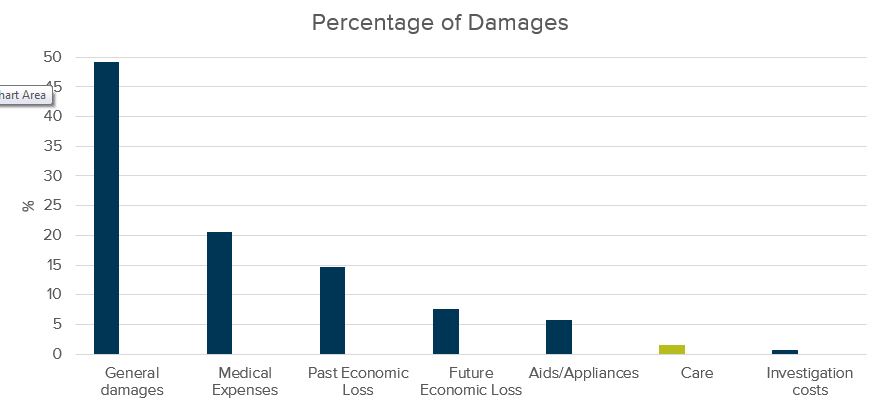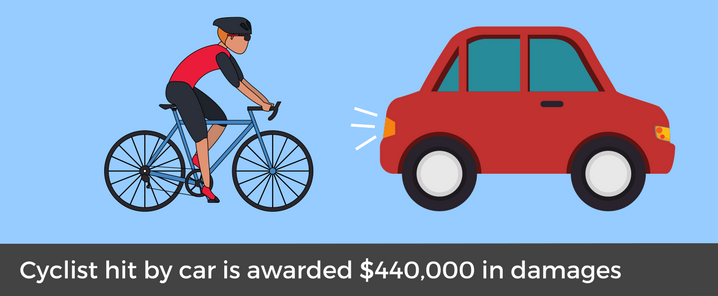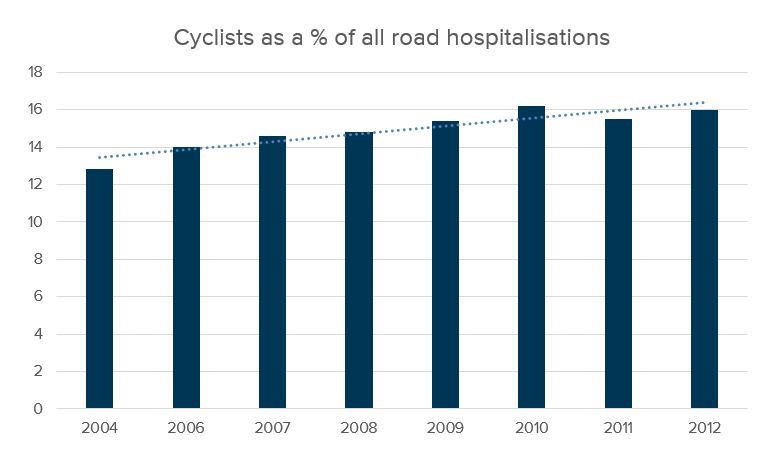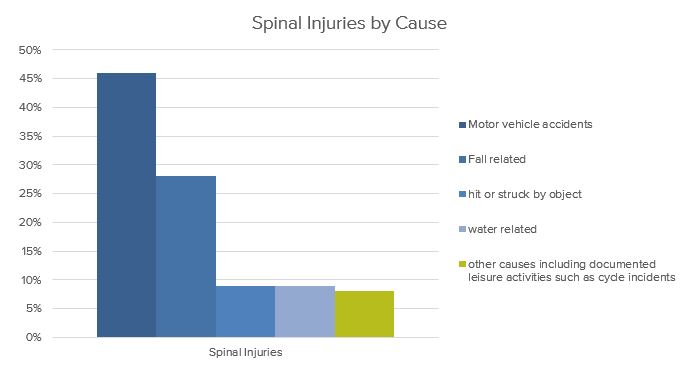The Facts
Gary Land was leading a single file peloton along the left shoulder of Airport Drive, Eagle Farm when a taxi veered directly in front of him and slammed on the brakes. Mr Land hit the rear of the vehicle and was thrown over the boot of the car.
Unfortunately, as is common in claims brought by cyclists, Gary suffered significant injuries to his back and one of his knees. He now also suffers post-traumatic headaches.
Mr Land made a claim for personal injuries against the negligent taxi driver.
The Judgment
The taxi driver tried to argue that Gary contributed to the accident by cycling negligently. However, there was no evidence of this at all and the driver eventually admitted that the driver was wholly at fault.
There was no way Gary could have avoided the collision. This made the Court’s job easier – the Judges were only required to consider the medical opinions about Mr Land’s injuries and to decide his loss of earnings.
The assessment of damages in Gary’s case was complicated by a history of injuries to his back and left knee...
About 3 years prior to the accident, Mr Land had a disc removed in his back and had surgery to relieve a pinched spinal nerve. The Court found that Mr Land had aggravated his previous injuries in the accident, and awarded an amount of $35,000 in general damages.
The Court also found that Gary’s capacity to earn income was reduced by 45% as a result of the injuries he sustained in the accident. At the time of the incident, Mr Land owned and operated Cycle Scene at Victoria Point. After the accident, Gary sold the business because his bad back stopped him from being able to longer carry out necessary tasks. Gary started operating a “pro bike fit” business from his home. At the date of the trial, he was almost 48 years old and would probably have worked until the age of 63. The Court assessed his future economic loss at $150,690.00.
After a three-day trial, Mr Land was awarded $382,690.00.
Expert Opinion
This was a great outcome for Gary. However, the damages awarded did not include any amount for past or future gratuitous care and assistance.
This is because the Court was unable to assess the amount of care and assistance that Gary required after incident or would require into the future.
Before the accident, Gary was solely responsible for washing the family cars, tending to the garden and washing up. He shared the house cleaning and grocery shopping with his wife.
Gary told the Court that after the accident, his wife had had to take up a more significant part of the housework, help him with his personal grooming and take care of the couple’s 4-week-old daughter.
However, the Judge needed to see a proper estimate of the hours Mrs Land spent providing care and assistance to Mr Land.
The Judge said:
“there was no detailed evidence before me from which I could even start to make an assessment”.
The Judge pointed out that the claim that Gary's wife had provided an estimated 45 days of care to Mr Land was not at all helpful.
If the hours of care and assistance Mr Land received had been set out in detail before the Court, he could perhaps have been awarded damages for that past care as well for the care he will require in to the future.
Care is often disregarded or forgotten by many claimants – in fact it only constitutes 1.549% of the average claim.

In my honest opinion, if claimants were meticulous and thorough in recording their care, it would be easy to increase this figure and not leave that money on the table.
The Consequences
If you are injured in an accident, it is important that you keep a record of all the care and assistance you receive – from friends and family as well as hired help.
For example:
- if you usually mow your lawn but because of your injuries you have to hire a gardener, make sure you keep the receipts
- if you are usually in charge of cooking the family meals but you can no longer do so, make a note of how much time your partner spends cooking those meals
- if you usually share the grocery shopping with your partner but now they have to go alone because you can’t walk, write down how much time that shopping takes.
Written by Claire McHardy | Solicitor






